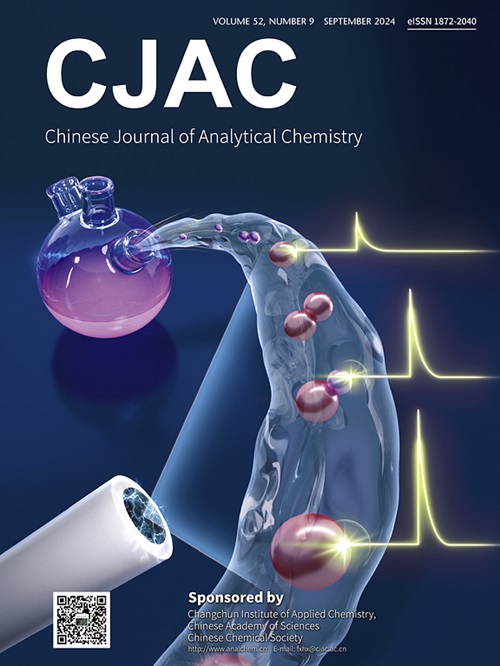Analytical strategies for quantifying methylated selenium species in staple crops: Methods, and emerging techniques
IF 1.3
4区 化学
Q4 CHEMISTRY, ANALYTICAL
引用次数: 0
Abstract
Background
Selenium is an essential trace element that exists in various forms, including methylated species, each with distinct biological activities and toxicity profiles. Understanding these transformations is critical for evaluating selenium's role in health and the environment. This review was conducted through a targeted search of multiple databases, including PubMed, Scopus, Web of Science, and Google Scholar. Keywords such as "selenium methylation detection" and "analytical methods for selenium" were used to gather a broad and relevant selection of articles. Studies were included based on their relevance, methodological quality, and contributions to the field.
Results
The review provides a detailed analysis of both established and emerging analytical techniques for selenium detection. This includes gas chromatography-mass spectrometry (GC–MS), liquid chromatography-mass spectrometry (LC-MS), high-performance liquid chromatography (HPLC), X-ray absorption spectroscopy (XAS), and nuclear magnetic resonance (NMR). It evaluates the effectiveness of these methods in separating, identifying, and quantifying selenium species, with a particular focus on sensitivity, selectivity, and throughput. Additionally, new technologies such as capillary electrophoresis coupled with inductively coupled plasma-mass spectrometry (CE-ICP-MS) and laser-induced breakdown spectroscopy (LIBS) are discussed for their potential to enhance precision and efficiency.
Significance
This review highlights the critical role of advanced analytical methods in understanding selenium transformations and improving measurement accuracy. By addressing challenges such as matrix effects, overlapping retention times, and spectral interferences, the review underscores the importance of reliable selenium analysis for health and environmental assessments, and provides insights into the ongoing advancements in analytical technology.

主食作物中甲基化硒的定量分析策略:方法和新兴技术
硒是一种必需的微量元素,以多种形式存在,包括甲基化的形式,每种形式都具有不同的生物活性和毒性特征。了解这些转化对于评估硒在健康和环境中的作用至关重要。本综述是通过多个数据库的目标搜索进行的,包括PubMed、Scopus、Web of Science和谷歌Scholar。关键词如“硒甲基化检测”和“硒的分析方法”收集广泛和相关的文章选择。研究根据其相关性、方法质量和对该领域的贡献被纳入。结果对现有的和新兴的硒检测技术进行了详细的分析。这包括气相色谱-质谱(GC-MS),液相色谱-质谱(LC-MS),高效液相色谱(HPLC), x射线吸收光谱(XAS)和核磁共振(NMR)。它评估了这些方法在分离、鉴定和定量硒的有效性,特别关注灵敏度、选择性和通量。此外,还讨论了毛细管电泳耦合电感耦合等离子体质谱(CE-ICP-MS)和激光诱导击穿光谱(LIBS)等新技术在提高精度和效率方面的潜力。本文综述了先进的分析方法在理解硒转化和提高测量精度方面的重要作用。通过解决诸如基质效应、重叠保留时间和光谱干扰等挑战,该综述强调了可靠的硒分析对健康和环境评估的重要性,并为分析技术的持续进步提供了见解。
本文章由计算机程序翻译,如有差异,请以英文原文为准。
求助全文
约1分钟内获得全文
求助全文
来源期刊
CiteScore
3.60
自引率
25.00%
发文量
17223
审稿时长
35 days
期刊介绍:
Chinese Journal of Analytical Chemistry(CJAC) is an academic journal of analytical chemistry established in 1972 and sponsored by the Chinese Chemical Society and Changchun Institute of Applied Chemistry, Chinese Academy of Sciences. Its objectives are to report the original scientific research achievements and review the recent development of analytical chemistry in all areas. The journal sets up 5 columns including Research Papers, Research Notes, Experimental Technique and Instrument, Review and Progress and Summary Accounts. The journal published monthly in Chinese language. A detailed abstract, keywords and the titles of figures and tables are provided in English, except column of Summary Accounts. Prof. Wang Erkang, an outstanding analytical chemist, academician of Chinese Academy of Sciences & Third World Academy of Sciences, holds the post of the Editor-in-chief.

 求助内容:
求助内容: 应助结果提醒方式:
应助结果提醒方式:


